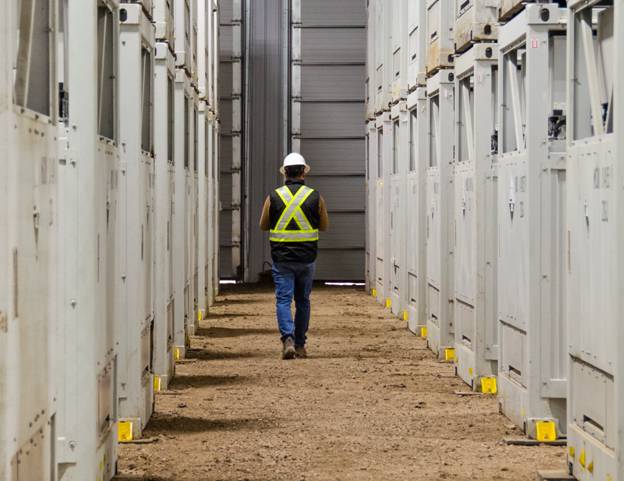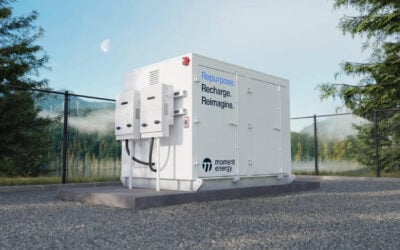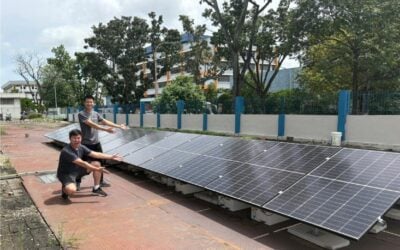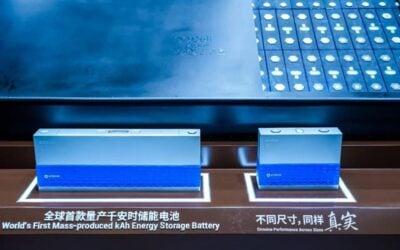
The government of Alberta, Canada, has selected advanced and clean energy projects to receive CA$33.7 million (US$24.83 million) in grant funding, including a hydroelectric-plus-supercapacitor technology pilot.
The funding is being awarded through Emissions Reduction Alberta (ERA), a government agency set up by the Canadian province on a ‘polluter pays’ principle, where large industrial entities pay into the pot based on their carbon emissions and other environmental harms.
Enjoy 12 months of exclusive analysis
- Regular insight and analysis of the industry’s biggest developments
- In-depth interviews with the industry’s leading figures
- Annual digital subscription to the PV Tech Power journal
- Discounts on Solar Media’s portfolio of events, in-person and virtual
The idea is that the projects will create long-term emissions reduction potential through technology innovations as well as creating economic value, with projects demonstrated, piloted or deployed within Alberta.
So far, this has seen the agency pay towards the capital cost of projects, including North America’s largest vanadium redox flow battery (VRFB), a 2.8MW/8.4MWh Invinity VS3 model flow battery system at the 21MWp Chappice Lake solar PV project.
That went online through developer Elemental Energy in September last year, while ERA is also funding Canada’s first commercial vanadium recovery project, another flow battery system at a solar PV plant using different electrolyte technology from Lockheed Martin, and early-stage pumped hydro energy storage (PHES) development, among others.
In its latest funding announcement made last week (28 March), ERA selected 13 projects through its Reshaping Energy Systems competition, which ran last year. ERA will fund between CA$500,000 and CA$6.5 million of each project’s value, with the portfolio adding up to a total value of CA$88 million in private and public investment.
These projects include large-scale battery energy storage systems (BESS), the hydro-plus-supercap combination, hydrogen fuelling stations, small modular nuclear reactors (SMNRs), technology to eliminate methane flaring off gas pipelines, energy use optimisation for oil and gas operations, cooling systems for overhead power transmission lines, distributed energy resource (DER) controls, and virtual power plants (VPPs).
Energy storage projects selected in Emissions Reduction Alberta competition
Energy storage-related projects to receive grants through the competition are as follows:
Atlas Power Technologies will get CA$6.5 million – the single largest sum of funding disbursed in the round – for its supercapacitor energy storage system to be deployed at an existing hydroelectric power plant operated by power generation and distribution company TransAlta. It is a first-of-its-kind project for North America, according to ERA.
The hybridisation will enable the system to deliver fast frequency response (FFR) ancillary services to the Alberta grid, responding in milliseconds to drops in frequency by delivering short bursts of high power. The grid operator, Alberta Electricity System Operator (AESO), is currently evaluting the rollout of a suite of frequency regulating market products, including FFR.
“As we increasingly rely on renewable energy, the scaling of technologies like Atlas Power’s supercapacitor energy storage systems become paramount for enhancing grid reliability and resilience,” said Sarah Goodman, president and CEO of the BC Centre for Innovation and Clean Energy, which supported Atlas in the development of its supercapacitor technology.
The grant goes towards the project’s total estimated cost of just over CA$14 million. TransAlta, which deployed Alberta’s first grid-scale battery storage system, made an application to regulators to get approval to deploy a BESS at one of its hydroelectric plants in 2022.
Receiving slightly less than that, at CA$6,449,326, is TERIC Power, which plans to deploy a 10MW BESS at an envirofuels facility owned by midstream oil and gas operator Keyera. The system, which TERIC Power has dubbed enhanced Load and Batteries (eLAB), will be designed to provide industrial backup power to the production site – thereby reducing its reliance on gensets – and grid services to AESO, which ERA claimed is another first-of-a-kind, this time for Alberta. Total estimated cost is CA$19.2 million.
TERIC Power will also get just under CA$5.3 million for another battery storage project from the programme, this time for the pilot deployment of a standalone BESS, which will be connected to the distribution grid. Called the Fluiditi Battery Storage Project, it will be built in Alberta’s Saddle Hills and connect to existing distribution lines, providing applications including peak demand management as well as grid services, with a total estimated cost of CA$18.2 million.
AltaLink, a regulated transmission provider owned by Berkshire Hathaway, will get CA$1.5 million towards the CA$3 million cost of evaluating how BESS technology could be used for the transmission grid. Such ‘storage-as-a-transmission’ (SATA) projects have been approved, and construction has begun, in Germany, Europe, in so-called ‘GridBoosters’ that will be owned by transmission companies and operated to increase the carrying capacity of their networks.
The ERA funding will support preliminary development studies.
Graph Energy will get just over CA$2.5 million for the validation and demonstration of graphene ultracapacitors that can be used to lower diesel fuel and natural gas consumption at generators used in remote locations.
The initial stage will see 30kW prototypes built, which can be scaled into much larger configurations and eventually megawatt-scale, with ERA providing around half of the project’s estimated CA$5 million cost.
Landmark Group of Companies will get CA$3.3 million towards the total CA$6.9 million cost of connecting 100 net zero energy solar homes to a virtual power plant (VPP) network. The UAE-based multinational conglomerate aims to integrate its VPP platform with the local grid operator’s distributed energy resource management system (DERMS) and utility billing and energy optimisation systems.






